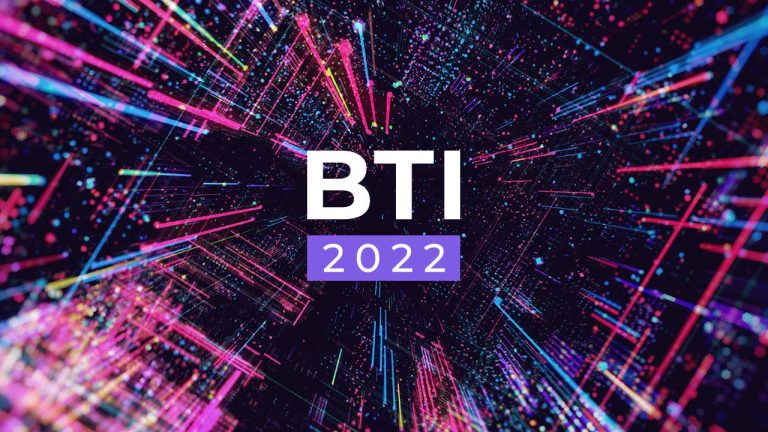
As I’ve been reflecting on the key findings from Expleo’s Business Transformation Index (BTI) 2022 report, it occurred to me that the heightened sense of urgency around digital transformation at enterprise level – albeit very encouraging – needs to be channeled in the most productive way possible, with a keen eye on the long-term.
Moreover, digital transformation initiatives have to be executed in a consistent and methodical manner. It’s not good enough to have ‘pockets of digital’ dotted across the business canvas, as siloed approaches ultimately lead to disjointed and fragmented project delivery. A unified vision around what you want to do is essential, and more so, a clear plan on how to bring this vision to fruition. Once organisations have found their ‘why’, they need to ruminate seriously on the ‘how’. For sweeping, digital-led operational change to be optimised, it requires firm buy-in from the enterprise’s most valuable resource: its people.
Defeating automation apprehension
It’s funny. Leveraging technology in our personal lives is typically viewed very positively. Think about Alexa contributing to day-to-day household administration, or the irresistible convenience of auto-filling fridges. Great, right? This warm embrace of tech in the home setting isn’t always reflected in the workplace, and you could say there is a professional aversion to automation. Given the fact that your staff are going to be dealing with robots on a more frequent and recurring basis, it’s critical that they are fully briefed on the implications of this new robotic reality on their work, and their roles within the organisation.
Robotic solutions will impact departments differently, and some areas of the business may be apprehensive about this new breed of innovation.
Rebecca Keenan, Head of Process Automation
If that’s the case, the introduction of robotic solutions needs to be handled delicately, and with tact. If it’s hastily shoe-horned into a set of processes within supply chain or HR departments, or if teams feel left out of the loop, the likelihood of that all-important staff buy-in is low.
This can create a situation in which tech is blamed for perceived lack of impact, even though the solution is perfect, technologically speaking. Staff at every level need to fundamentally understand how automation affects their job and if they don’t, an organisation’s ability to scale at pace and stay competitive will be hindered.
Agile approach to automation

For me, standout findings from the BTI 2022 report include the fact that 51% of respondents agreed that a measured, ‘methodical’ approach to digital transformation was optimal, whereas 28% of respondents favoured a ‘fail fast’ approach. Personally speaking, I believe a hybrid provides the most fertile ground for sustained innovation. Proper structure and governance are cornerstones of digital transformation success, but a willingness to chart new paths with a spirit of fearlessness, and fast, is the real key.
If an organisation is automating at pace, it’s very important they can ‘methodically’ fail fast – organised chaos can be a beautiful thing. Having a trial and error mindset is healthy, this is where innovation happens! However, decision making at the top has to be quicker.
Findings from our report suggest that progress is being made on the decision making front, albeit slowly. 36% of respondents strongly agreed that their organisations were more likely to approve new IT strategies now than before the pandemic, which was actually surprisingly low to me. Moving forward, what will these revamped IT strategies consist of? I expect the hyper-automation movement to continue to gain traction at board level, in which everything that can be automated across an organisation, is, and everything that can’t, is managed by a human. The scope of automation is massive, with potential for numerous deployments well before the production stage. Automation across the entire lifecycle can drive substantial efficiency gains, from ideation to production.
Long-term vision is key
Quick automation ‘wins’ are great, but what about 12 months down the line? Establishing a long-term roadmap is a core facet of optimised digital transformation. You can’t hit a target you can’t see, and you can’t see a target you don’t have! You have to know where you’re going, and more importantly, how you’re going to get there. Not having a well thought-out plan will be damaging, not least in terms of undermining staff morale and belief in the digital transformation agenda.
Part of this long-term vision means recognising the role of your people in this effort, and prioritising digital skills and training initiatives – to maximize the future potential of staff. Also, organisations should broaden the parameters of what an ‘expert’ looks like. I would encourage a ‘merit over tenure’ mindset, whereby today’s new breed of tech-savvy graduates are given a platform to share their views, ascend the ladder, and be listened to. This may mean abandoning legacy constraints and phrases such as ‘this is the way we’ve always done it’.
While staff members should hold themselves accountable in terms of expanding their skillset, leadership should also be held accountable in terms of providing the necessary support to make this automation transition as seamless as possible for everyone, from C-suite to interns. Us humans are complex creatures, but we are all driven by emotion and an inherent desire to be part of something bigger, something profound. Sometimes that sentiment is forgotten in a sea of AI chatbots, and dynamic robotic deployments. People want to feel something, and a company’s value set and long-term vision need to align with the aspirations of staff. As the talent war rages on, this emotional connection is of paramount importance.
In conclusion, if you’re going to automate at scale, you need to have a fully crystallized vision of what that’s going to look like for your organisation. Then when it comes to execution, consider what processes should be prioritised. Is it the customer service piece? The compliance piece? What are the budgetary constraints? You also need to figure out how automation can make your operations and your people. more efficient. These are critical exploratory questions, but once ironed out, the path towards optimised automation will become clear.
See the full Business Transformation Index 2022 report by clicking the link below.






